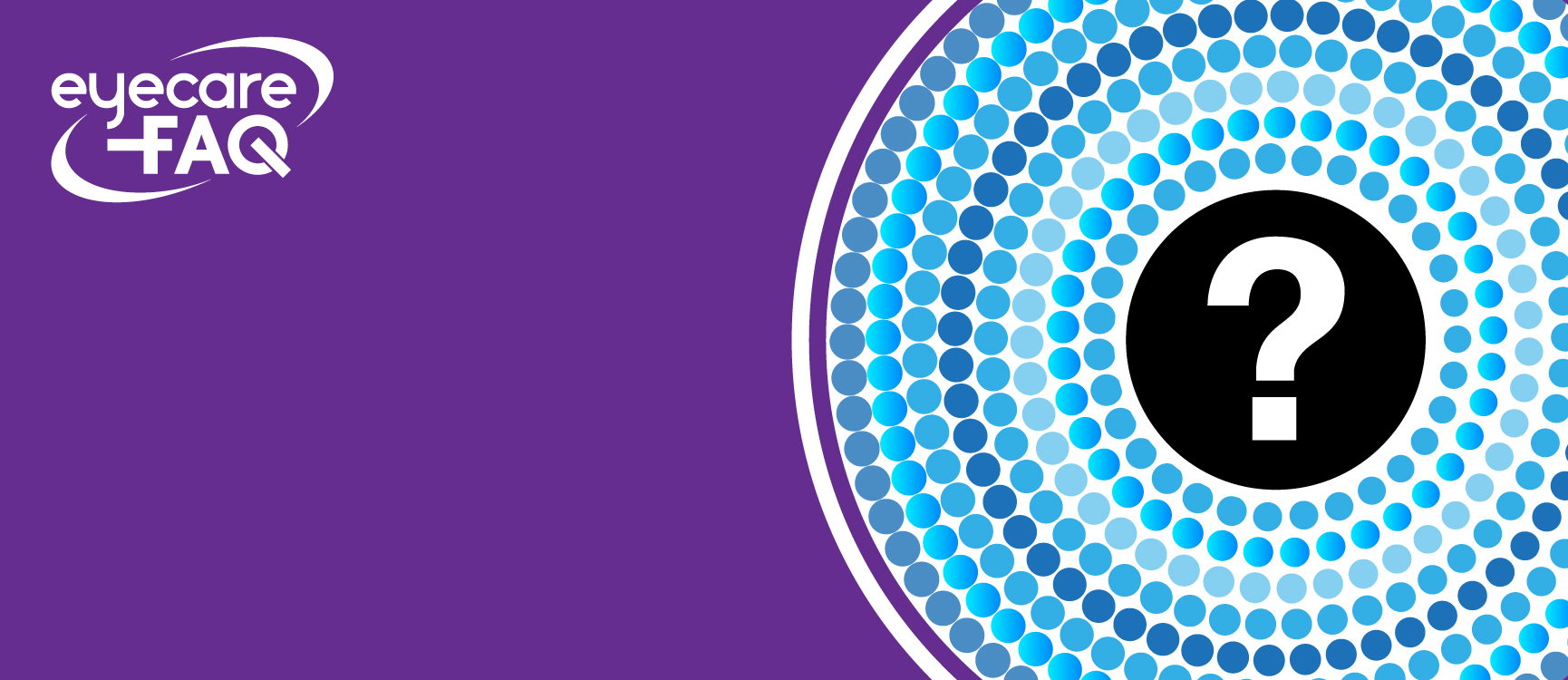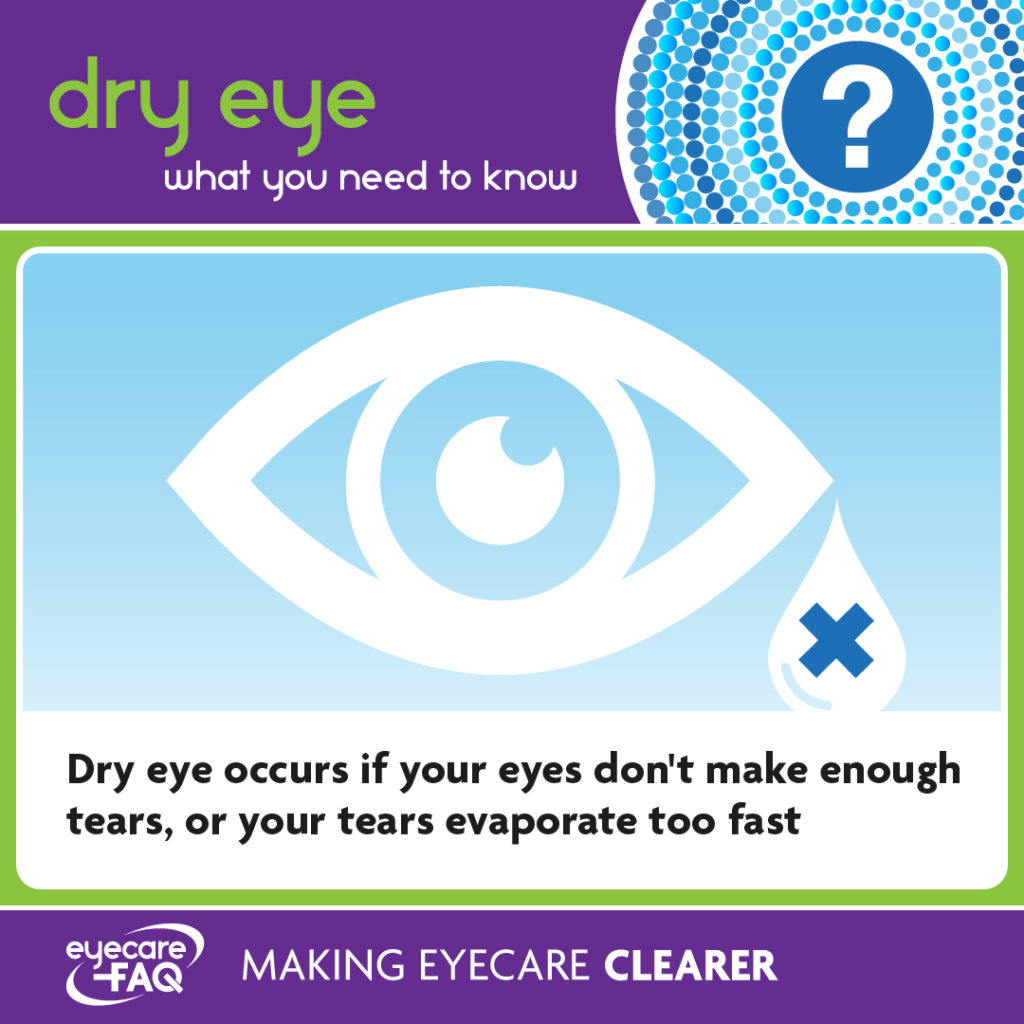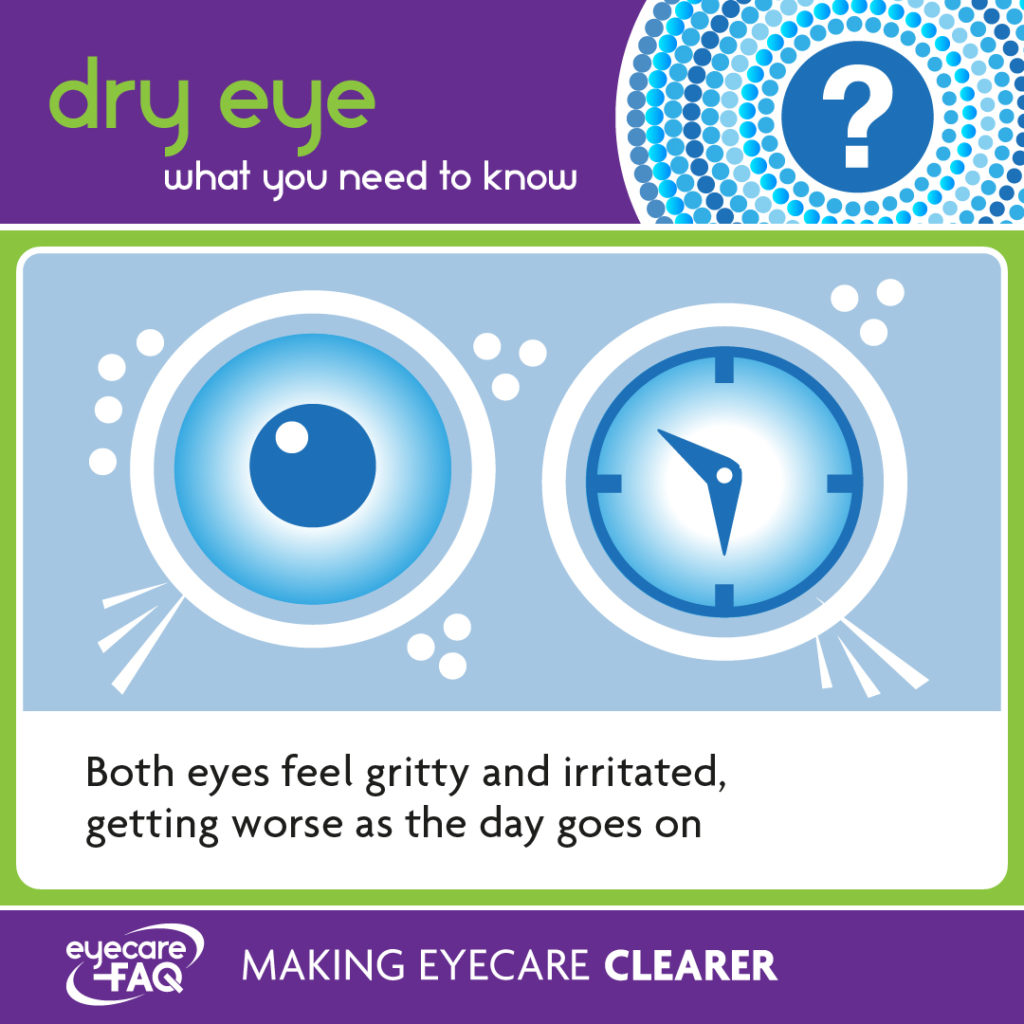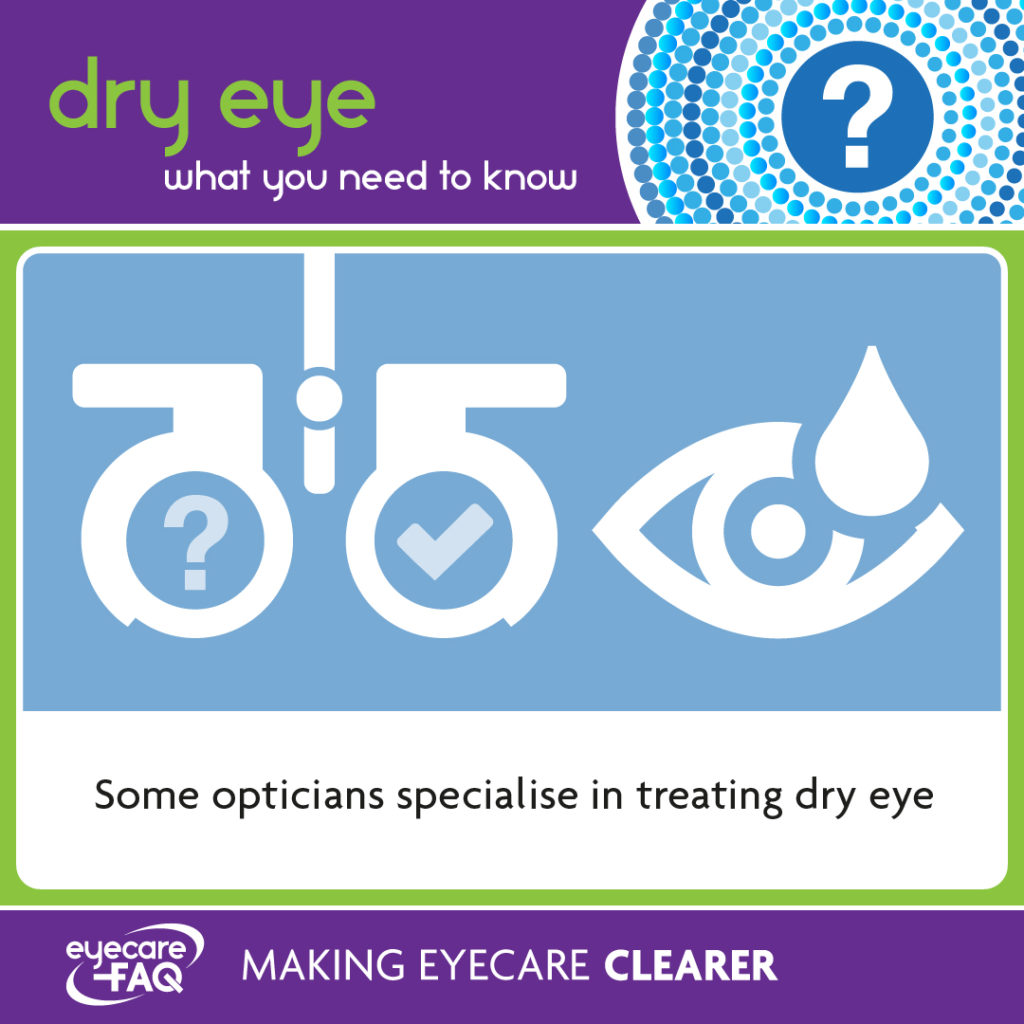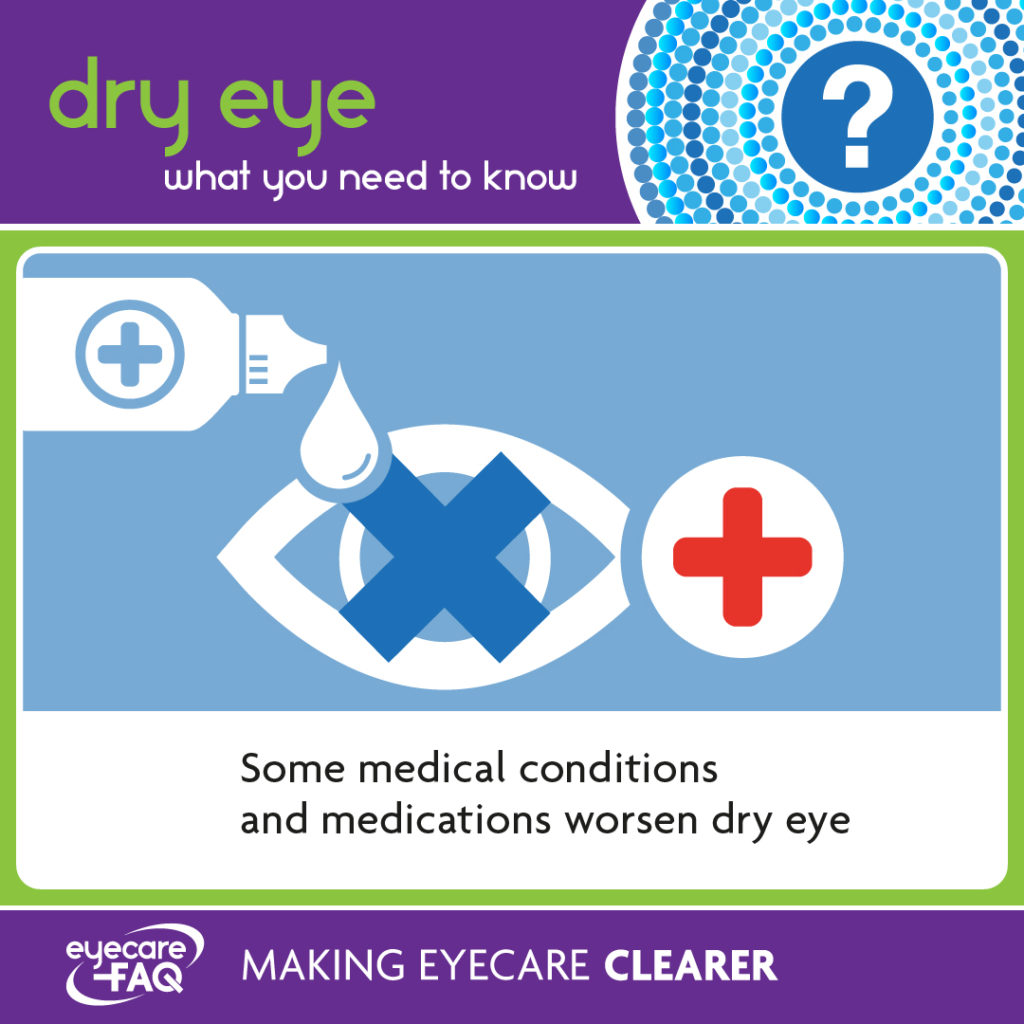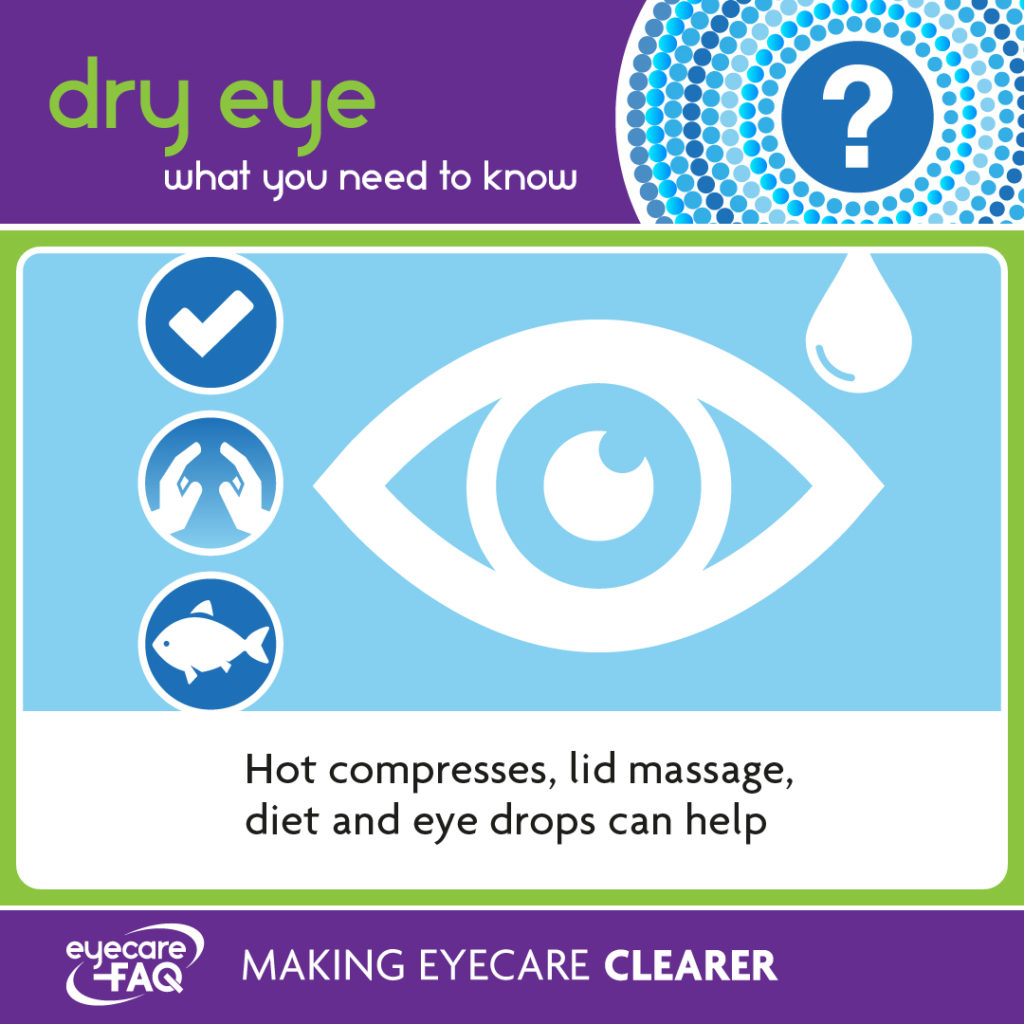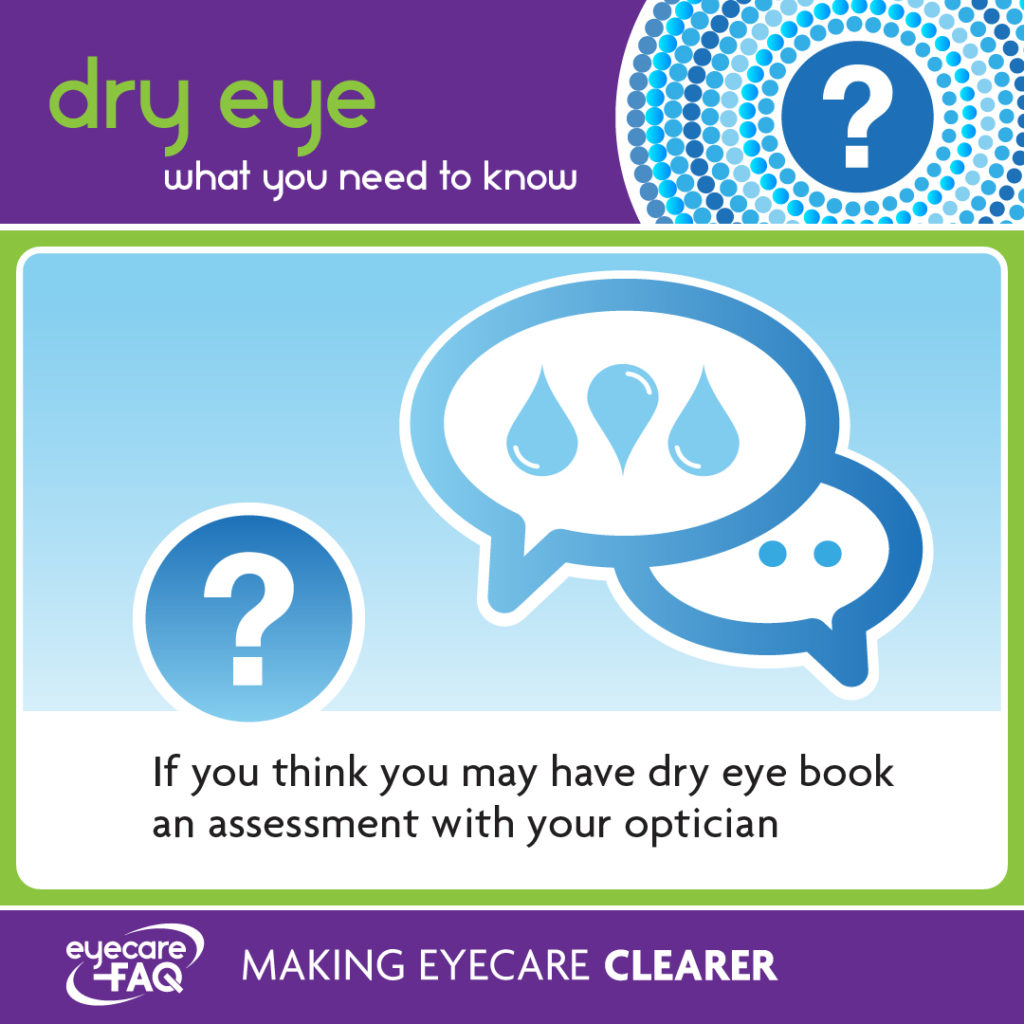What is dry eye?
Your eyes are naturally lubricated by a layer of tears. Tears have a watery part and an oily part. Dry eye syndrome, or dry eye disease, occurs if the eyes don’t make enough tears, or the tears evaporate too quickly. Your eyes may become irritated, worsening as the day goes on. Dry eye can also be known as keratoconjunctivitis sicca.
What causes dry eye?
There are a range of factors that cause dry eye. Tear production is something that generally happens without any effort or thought – so it can be a shock when it goes wrong. There are a number of factors that can cause problems. Your eyes may not produce enough tears, or the oily layer that stops the tears evaporating may be of poor quality. Dry eye symptoms can be worsened by dry, sunny and windy climates, contact lenses, eye conditions such as blepharitis, some medications including anti-depressants and diuretics, and hormonal changes such as the menopause, pregnancy, or going onto the contraceptive pill. Tear quality and quantity tends to decrease with age too. Air conditioning and computer use can exacerbate dry eye. People who have had certain types of laser eye surgery may find they have dry eye syndrome after surgery: this usually clears up within a few months but for some people the problem persists.
If you think you may have dry eye book as assessment with your optician. Some opticians specialise in treating dry eye.
What are the signs of dry eye?
If your eyes both become irritated as the day goes on, and this happens every day, you may have dry eyes. You may feel that your eyes are simply irritated or that they burn. Some people find their eyes are gritty on waking. Surprisingly, people with dry eye may find their eyes water as the eye tries to relieve irritation by increasing the production of tears. Your vision may be normal, or it may become blurry as the day goes on but clear on blinking. If you think you may have dry eye book as assessment with your optician. Some opticians specialise in treating dry eye.
I have contact lenses and dry eye, what can I do?
If your contact lenses are causing dry eye problems you may need to change to a different type of lens. Discuss this with your contact lens optician or optometrist and they can advise on the best lens to try. You may also want to alter your pattern of lens wear or solution: again, seek professional advice before making any changes like this. Your optician can also suggest suitable eye drops that will work with your contact lenses. Seek advice before purchasing eyedrops as some are unsuitable for contact lens wearers.
My eyes are dry and my lids are red and irritated. What should I do?
Dry eyes with irritated lids can be a sign of blepharitis. Speak to an optical practitioner who can examine your eyes and suggest the best course of treatment.
What medical conditions also cause dry eye?
Medical conditions that can increase your risk of dry eye include allergic conjunctivitis, contact dermatitis, Sjögren’s syndrome, rheumatoid arthritis, lupus, scleroderma, Bell’s palsy and HIV. If you have one of these problems talk to your consultant about any eye irritation.
Who is most likely to have dry eye?
More women than men have dry eye, and your chances of developing the condition increase with age.
How do you treat dry eye?
There are a number of ways to treat dry eye. It is important to find out the cause before starting treatment. If your Meibomian glands are not producing enough oil, hot compresses or massage with a special machine can help improve this. Omega oil supplements can also improve the quality of the oily secretions that are needed to help your tears. Some people have a tiny mite which irritates the eyelashes: this can also worsen dry eye. If you have this mite, your optician can use a special procedure to remove the mites which cuts irritation. If dry eye syndrome is caused by an underlying medical condition, treating this condition may help to relieve the symptoms. For persistent dry eye, a procedure to reduce tear drainage can help. Talk to your optician about which treatment might help you.
Should I buy eyedrops to help my dry eye?
Before purchasing eyedrops, you should find out the cause of your dry eye. Speak to an optician who can examine your eyes and determine the cause and appropriate treatment. Eyedrops can help your eyes feel more comfortable in the short term but there are other treatments which can give a long-term benefit.
Which eyedrops will be best for me?
If you have mild dry eye, you can pick lubricating eye drops or gels. Ointments are stickier and can cause temporary blurring of the vision but have a longer lasting effect. Most lubricants are available without a prescription over the counter from a chemist but do seek professional advice from an optician before purchasing.
Should I use eyedrops with or without preservatives to treat my dry eyes?
Many eye drops contain preservatives to stop bacteria growing inside the bottle. These preservatives aren’t good for everyone. Contact lens wearers should avoid drops with preservatives which can build up inside the lenses. People who use eyedrops more than six times daily and those with severe dry eye who are using treatment over a long period day are better with preservative-free eye drops. Talk to your optician about whether the best eyedrops for you.
I have dry eye but struggle to put eyedrops in. What can you advise?
Dry eye often occurs in older people, as well as those with rheumatoid arthritis and other conditions that may cause joint pain or hand weakness. It is not unusual to struggle to use eyedrops. Talk to your doctor or pharmacist about this as there are devices which make it easier to squeeze a bottle and ensure the drops reach your eyes.
What are the options for surgery for dry eye?
If you have severe symptoms from dry eye that do not respond to other treatments you may find surgery is your best option. One procedure, called punctal occlusion, involves inserting a small plug in the ‘puncta’, a tiny hole in the inner corner of your eyelids. This reduces the drainage of tears from your eye. Temporary silicone plugs are used at first to see if this helps. If it does, then more permanent plugs are used, or heat can be used to seal the punctal drains. Talk to your optician about whether this treatment might help you.
What can I do at home or work to help my dry eyes?
Talk to your optician about how to improve your dry eye. There are plenty of actions you can take to help your symptoms. Protect your eyes from wind and hot dry air, smoke and dust. Wrap around glasses can help with this. Specialised glasses called ‘moisture chamber’ spectacles help your eyes retain moisture. Try to avoid eye make-up and see if that improves your symptoms. When reading, writing or using a computer ensure that you blink more often, and every 20 minutes take a break. An air humidifier moistens surrounding air which may reduce your symptoms. Simply opening the windows can also help, particularly if you are in an artificially heated building!
I’ve been told to practice lid hygiene. What should I do?
Keeping your lids clean can help with dry and irritated eyes. Every morning and night, use a warm compress on your eyes. Holding this in place for a few minutes will improve the production and flow of oil from the glands in your lid. Gentle lid massage with a clean cotton wool bud will help the oils flow too. Then use special wipes or cotton wool and cooled boiled water to clean the edges of your lids and your lashes. Talk to your optician about whether lid hygiene might help you.
What should I eat to help with the symptoms of dry eye?
Research shows that a diet high in omega-3 fats can help improve dry eye syndrome. Eat foods with omega-3s such as oily fish, like mackerel, salmon, sardines or herring. Omega-3s are also found in various nuts and seeds, vegetable oils, soya and soya products, and green leafy vegetables. Drink plenty of water too. You can also take omega-3 supplements to boost what you gain from your diet.
When should I see a professional about dry eye?
You can visit your high-street optician or optometrist for advice on whether you have dry eye, what type, and how to treat it. Talk to your optometrist or GP straight away if you have severe symptoms or call NHS 111 for emergency advice.
Are there different types of dry eye?
One type of dry eye, tear deficient dry eye, is caused by insufficient tear production. The other type, evaporative dry eye, is caused by disruption of the protective oily layer of your tear film.
Is there a cure for dry eye?
Some people can find that specific treatments permanently cure their dry eye, but for many people it is a case of ongoing management. There are new treatments being developed all the time, so talk to your optician or ask for a referral to an optician who specialises in dry eye.
What is Lipiflow treatment for dry eye?
The LipiFlow Thermal Pulsation System combines warm compress therapy and meibomian gland expression. A device fits onto the eye and over the lids and applies heat and pulsed pressure to the eyelids to open and express clogged meibomian glands. The treatment takes around 12 minutes per eye and most patients report improvement of dry eye symptoms within two weeks. Talk to your optician about whether this treatment might help you.
What is IPL treatment for dry eye?
IPL, or intense pulsed light, is a new treatment which may provide relief from dry eye symptoms. You may require a series of treatments to improve Meibomian gland function. Talk to your optician about whether this treatment might help you.
What is BlephEx for dry eye?
If your eyelid margins are clogged up with dead skin, bacteria and mites this can prevent the flow of natural oils and exacerbate dry eye. BlephEx is a machine that gently removes debris and mites from the lid margins and can improve dry eye. Talk to your optician about whether this treatment might help you.
